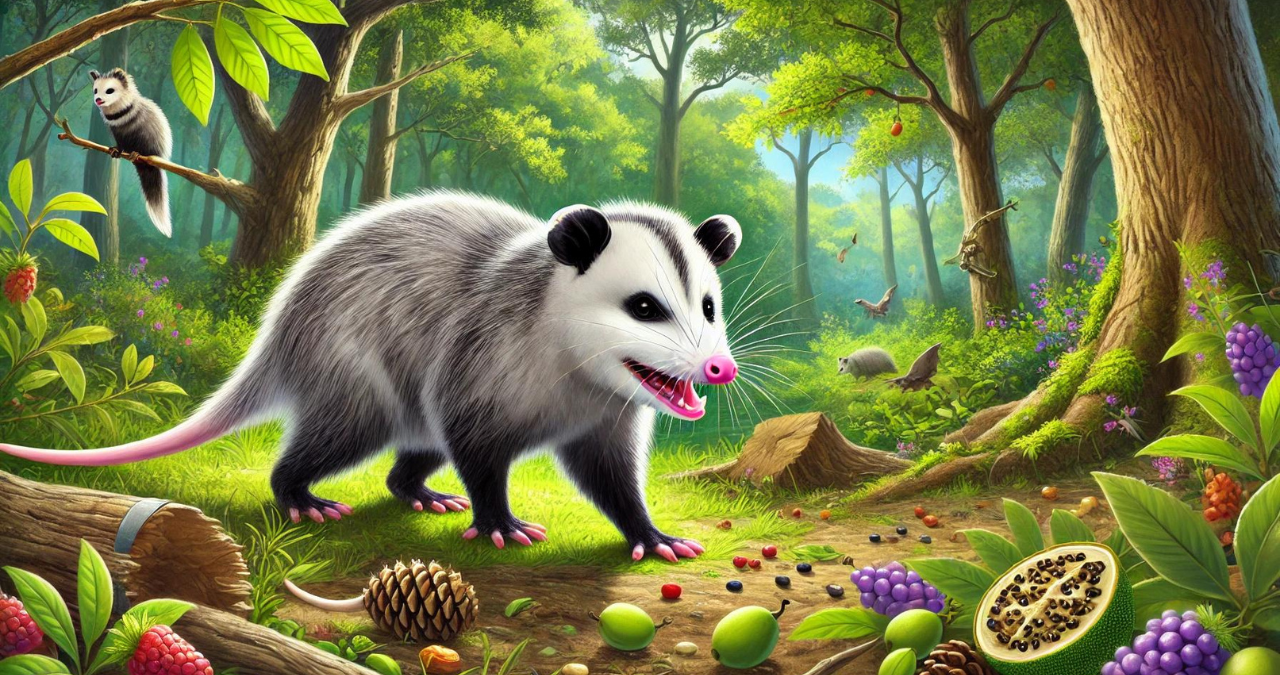Introduction
The tñacuache, commonly known in English as the opossum, is one of the most misunderstood creatures in the Americas. Often seen as pests or nuisances, these marsupials play a vital role in their ecosystems. This article aims to dispel the myths surrounding the tñacuache, shedding light on their true nature and the benefits they bring to urban and rural environments.
Understanding the Tñacuache
Scientific Classification:
- Kingdom: Animalia
- Phylum: Chordata
- Class: Mammalia
- Order: Didelphimorphia
- Family: Didelphidae
- Genus: Didelphis
- Species: Didelphis virginiana (common opossum)
Physical Characteristics:
The tñacuache is notable for its distinctive appearance. With a body length of about 2.5 feet and a weight of up to 14 pounds, it has a grayish-white face, a fur-covered body, a scaly tail, and sharp teeth. Perhaps its most famous feature is its ability to play dead as a defense mechanism against predators.
Habitat and Distribution:
Tñacuaches are highly adaptable and can be found in various environments, from wooded areas to urban settings. They are prevalent throughout North and Central America.
Myth vs. Reality
Myth 1: Tñacuaches Are Dirty and Spread Disease
Contrary to popular belief, tñacuaches are quite clean animals and, due to their low body temperature, are less likely to carry diseases like rabies.
Myth 2: They Are Aggressive
Tñacuaches are generally non-aggressive and shy. They avoid confrontations and often ‘play dead’ when threatened.
Myth 3: Tñacuaches Are Harmful to Gardens and Homes
While they can occasionally be found rummaging through trash or gardens, they are also beneficial as they help control pests and clean up dead animals and overripe fruits.
The Ecological Impact of Tñacuaches
Pest Control:
One of the most beneficial roles of tñacuaches is their diet, which includes unwanted pests such as ticks, cockroaches, rats, and dead animals. A single tñacuache can eat up to 5000 ticks in a season, helping curb the spread of Lyme disease.
Seed Dispersal:
Tñacuaches contribute to their ecosystems by dispersing seeds. As they move from one location to another, seeds not digested in their system are excreted in different areas, helping with forest regeneration.
Biodiversity Indicator:
Their presence in an area is often an indicator of the health of an ecosystem. As generalists, tñacuaches can thrive in diverse environments but will disappear from areas where the ecosystem is severely disrupted.
Conservation Status and Human Interaction
While tñacuaches are not endangered, urban development and pollution are increasingly threatening their habitats. Maintaining a healthy respect and understanding of these animals ensures they continue to thrive and benefit our ecosystems.
FAQs About Tñacuaches
1. Can tñacuaches play dead?
Yes, playing dead is a defense mechanism known as thanatosis. Tñacuaches fall into a temporary coma-like state to avoid predators.
2. Are tñacuaches good to have around the house?
While they should not be encouraged to enter homes, having a tñacuache nearby can reduce the number of pests like ticks and rats.
3. What should I do if I find a tñacuache in my yard?
It’s best to leave them alone as they are generally harmless and can help control unwanted pests.
4. How can I humanely discourage tñacuaches from entering my property?
Securing garbage cans, closing off crawl spaces, and using motion-activated lights can help deter tñacuaches without harming them.
5. What do tñacuaches eat?
Their diverse diet includes fruits, nuts, insects, worms, small animals, and carrion.
Conclusion
Tñacuaches are crucial in their ecosystems as pest controllers and seed dispersers. Understanding and appreciating the real life of these marsupials helps dispel the myths surrounding them and highlights the importance of their conservation. By promoting a balanced view of tñacuaches, we can foster coexistence with these fascinating creatures, ensuring they remain an integral part of the ecological community.
You May Also Read: https://usaredmagazine.com/kawaiip1ifmjgpipg-cat/
